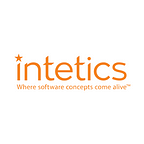Best Regions to Source a Software Development Team
If you’re only working with an in-house software development team, you’re missing out on a wide array of benefits — from costs savings and increased efficiency to a deeper talent pool. Gone are the days when the US, China, and India were the only coveted development regions: Eastern Europe is quickly rising to the forefront. Even tech giants like Google, Microsoft, and IBM have begun to focus on this promising area, opening up software development centers.
It’s understandable to feel hesitant about overhauling your team structure. After all, who wants to go through the hassle of recruiting and onboarding again? Well, there’s a way around that: Remote In-Sourcing®. But more on that later! For now, let’s look at the advantages of hiring from other regions, as well as the most promising tech hotspots.
Why Should You Look to Other Regions to Find Developers
There are many benefits to working with an offshore development team, including:
- Cost savings: Offshore development teams are often much cheaper to work with than in-house teams or even local freelancers. You can hire teams from countries with lower costs of living; salaries will likewise become more affordable.
- Access to a global talent pool: Don’t limit yourself to your own locale! By broadening your scope, you can find the best developers in the world, no matter where they are located.
- Increased efficiency: To maximize this benefit, you can hire developers from multiple regions of the world. Upon doing so, you’ll have a workforce distributed across multiple time zones — if you strategize right, this can significantly reduce your product’s time to market.
Top Regions to Source Talent
1. Eastern Europe
Eastern European countries like Poland or Moldova are home to a large number of talented software developers and have become a popular destination for outsourcing in recent years. The region offers a number of advantages, including competitive pricing, a large pool of talent, and a good communication infrastructure.
What’s more, the tech landscape is rapidly growing — for instance, Poland has become a destination for outsourced business services; this sector has grown three times faster in Poland than in India.
There are also tax incentives in Eastern European countries that aim to attract IT employers and developers. Furthermore, Eastern Europe is home to some of the best tech universities in the world, including the Warsaw University of Technology and POLITEHNICA. These universities each produce 1,000–2,000 graduates per year, making the talent pool even wider.
2. Caucasus
If you turn your gaze a little further Southeast, you’ll find another rapidly-developing tech region: the Caucasus. The countries therein (Georgia and Armenia, in particular) are viable sourcing candidates. While the Caucasus might not be as popular of an offshoring region as Eastern Europe, it is experiencing continuous, sustainable growth in the IT sector. For example, over the last fiscal year, Armenia managed to increase the YoY growth rate of ICT revenue from 2.8% to 7.4%.
Caucasus has a well-educated, English-proficient workforce, strong IT university programs, and solid government support for the IT sector. And yet, labor and operating costs are even lower than in Eastern Europe.
Selecting a Team Model
After you’ve determined which regions you want to source developers from, you’ll need to choose a team model. Distributed development is one of the most common methods of working with overseas developers, but it comes with its own challenges. Remote In-Sourcing® addresses those challenges and combines the benefits of in-house and offshore development.
Let’s take a look at both models.
Distributed Teams Model
If you follow this model, you’ll hire decentralized teams located across various regions — where those regions are is up to you. The teams will use collaborative technologies to plan, design, build, test, and manage software. This model is excellent for saving costs and improving efficiency, but you’ll have to scour the globe for top talent, which can be time-consuming.
Pros:
- You can build a distributed team much faster than an in-house one.
- Resources can be moved around easily.
- You’ll get access to a wider talent pool.
Cons:
- Management and communication can be more difficult when your team is geographically distributed.
- With a wider talent pool to source from, you may face the “paradox of choice.”
Remote In-Sourcing® Model
With this model, you’ll work with a vendor who handles all of the logistics and hiring. Unlike the distributed team model, you won’t have to deal with the hassle of recruiting developers, setting up workspaces, or maintaining operations. You’ll receive a dedicated remote team that integrates with your in-house team and is exclusively dedicated to your project — and you get to keep all of the intellectual property.
Pros:
- This is the fastest way to build a development team, and you don’t have to worry about any of the hiring processes.
- You have full control over the team.
- The team can easily be scaled up and down as needed.
- By using the Intetics’ Team Formation model, your team can handle all project phases from initial prototype to support.
- You keep all of the intellectual property.
- You can benefit from a wide talent pool and affordable salaries.
Cons:
- Because your team is distributed across geographical lines, it’s important to take extra care with communications.
Ready to Access a Global Talent Pool Without the Hassle of Recruitment?
If you want to unlock the cost savings, productivity, and flexibility of a distributed team — but without actually scouring the globe for talent — then Intetics’ proprietary Remote In-Sourcing® Model might be the right solution.
Do you need extra resources to sustain a long-term project? Do you want to use global markets to your advantage? Do you need a quick turnaround time for team formation? If so, reach out to us, and we’ll get the ball rolling.
